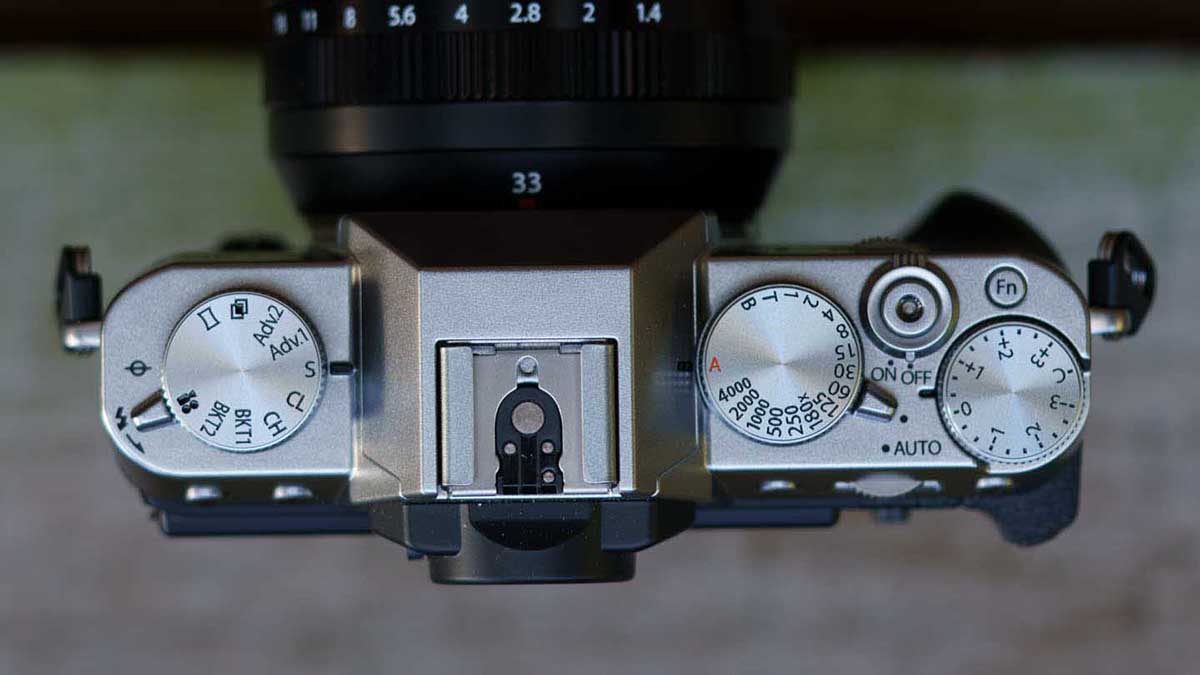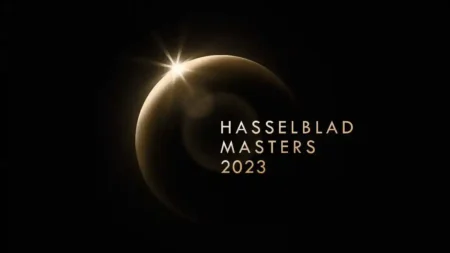Externally, the Fujifilm X-T30 II is identical to the X-T30. Even its name badge is the same and the only way to tell them apart from the outside is to check the model name on the sticker on the battery compartment cover.
This means that the X-T30 II has same mini-DSLR styling and solid feel as the camera it replaces. Also, although it’s not weather-sealed, its top and bottom plates are made from magnesium alloy and the dials are aluminium alloy.
Also, while it’s a small camera, the X-T30 II’s grip is well-shaped so that it feels okay with larger lenses like the Fujifilm XF 50-140mm f/2.8 R LM OIS WR. Nevertheless, it feels best when paired with a small zoom or prime lens.
Control layout
On the left side of the X-T30 II’s top-plate there’s a dial for setting the drive or shooting mode while on the right there are dials for setting the shutter speed and exposure compensation. There’s also a switch that can come in handy for novice photographers as when it’s set to ‘Auto’ it puts the camera in control of everything.
There are front and rear control dials to speed making setting adjustments, and the camera is compatible with Fujifilm lenses with or without an aperture ring.
When the shutter speed dial and aperture ring are both set to A, the X-T30 II sets the exposure itself and is in Program mode. However, if you set the lens aperture ring to a specific value and leave the shutter speed dial on A, the camera is in aperture priority mode. Conversely, when the aperture ring is on A and a shutter speed value is set via the dial, the X-T30 is in shutter priority mode.
You can also shoot in manual exposure mode by setting specific values on both the shutter speed dial and the aperture ring.
If you need to adjust the exposure compensation in program, aperture priority or shutter priority mode, there’s the dedicated dial at the right end of the top-plate. This has settings running from -3 to +3EV in 1/3EV steps. However, there’s also a ‘C’ setting that allows the range to reach -5 to +5EV. When C is selected, the exposure compensation is adjusted using the X-T30 II’s front control dial. This dial also adjusts the aperture value when the lens doesn’t have an aperture ring, but you can switch between adjusting the aperture and the exposure compensation by pressing the dial to toggle between the two parameters.
If you compare the Fujifilm X-T30 II with the X-T20, you’ll notice that the control arrangement on their backs is quite different. Instead of the navigation pad that’s seen on the X-T20, the X-T30 and X-T30 II have a small joystick that can be used for making menu setting selections and setting the AF point. It’s faster and easier to use than a navigation pad but it means that the shortcuts available via each key are also gone. However, the X-T30 II’s allows gesture control to give quick access to some key features. This take a little getting used to at first, but it works well.
Generally, the X-T30 II’s control arrangement is very good, but as with the X-T30, the Q button, which is used to access the Quick Menu is badly positioned on the top of the thumb rest. Unfortunately, this is prone to being pressed accidentally and the only solution is to use the customisation options to set another button to access the Quick menu.
Viewfinder and screen
Like the X-T30, the Fujifilm X-T30 II has a 0.39-inch type OLED viewfinder with 2.36-million dots.
As I mentioned earlier, X-T30 II’s screen is a 1.62-million dot unit, up from 1.04-million-dots on the X-T30. As on its predecessor, the screen is mounted on a tilting bracket to make it easier to use when the camera is in landscape orientation above or below head-height. It doesn’t help with portrait-orientation shooting though.
Both the screen and the viewfinder show a good level of detail and accurately preview the colour and exposure of the image.
The screen is very responsive to touch but it’s not possible to make main menu setting selections with a tap, that’s limited to the Quick menu.



